Indigenous Fashion Shows in Santa Fe Feature a Thrilling Debut

Jontay Kahm was all business backstage on Sunday at the Santa Fe Convention Center, ahead of his debut at the Southwest Association of Indian Arts group fashion show.
“This is the first time my clothes have ever been worn by people or seen in motion,” said the Plains Cree designer.
More from WWD
His 17-piece BFA graduate collection from the Institute of Indian American Arts was a stunning debut, using dyed duck and turkey feathers in innovative ways to pay homage to traditional haute couture and traditional Native dress, all of it begging for a red carpet.
“Pretty extravagant, huh?” Kahm said of his model flock in fabulous Technicolor straw fringe, in sculpted feather gowns resembling Native headdresses, blanket shapes, or with panniers thrusting forward. Particularly impressive was a feather chain mail technique he used on a blue Empire gown, and on the finale wedding gown with a halo of feathers in back.
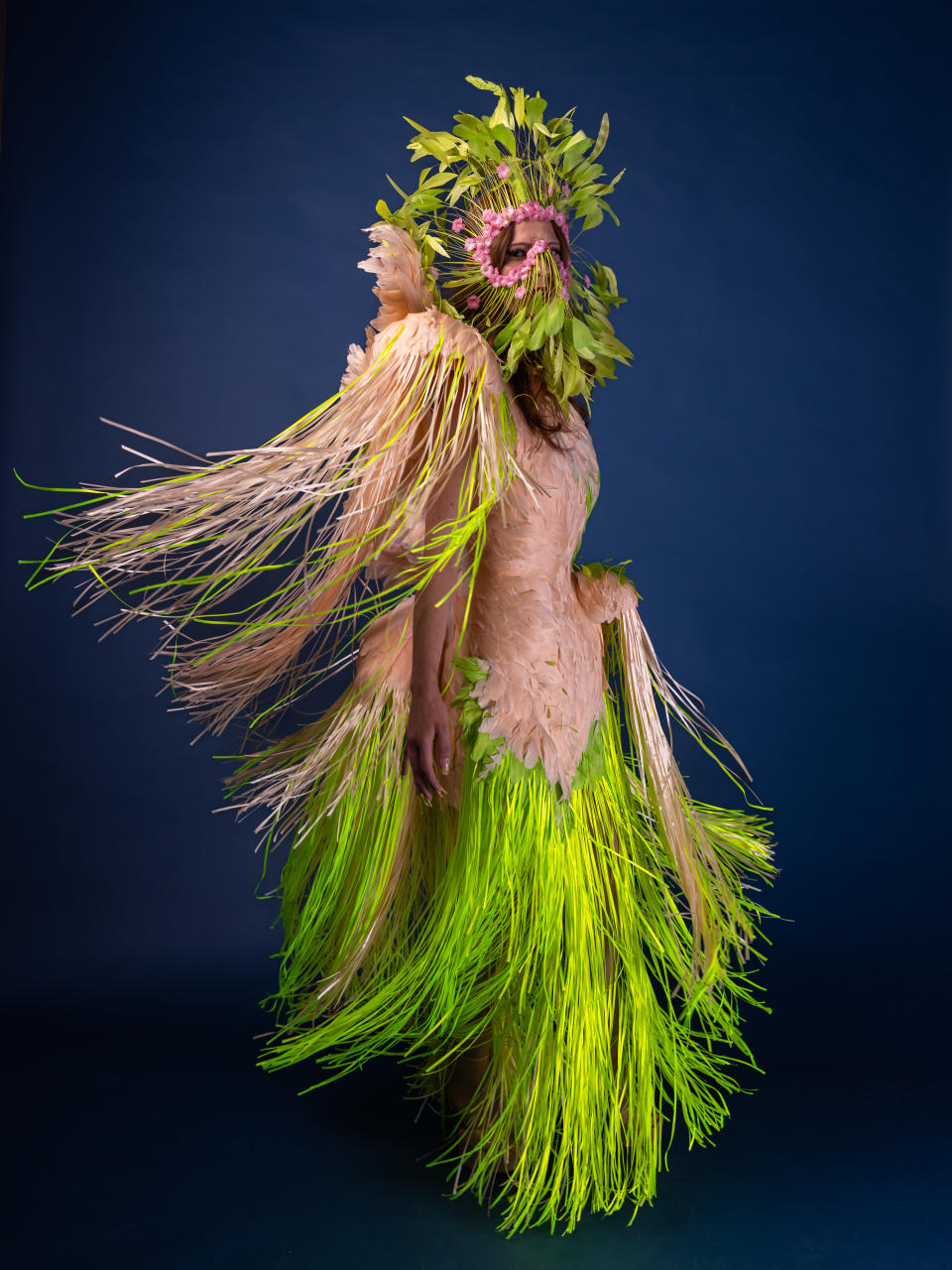
“It’s called ‘Regalian Bodies.’ It’s about death, grief and the afterlife, and it’s taking inspiration from fancy dance regalia, fancy straw, ribbon dresses…making bustles, putting the bustle in front, using chain mail technique. It’s all about my dad passing away and me trying to cope,” he explained. “I’m using all these haute couture silhouettes, like the Dior hips with the duck feather dress, a bit of Galliano and McQueen.” The face-obscuring feather and flower masks and headpieces also would make Philip Treacy proud.
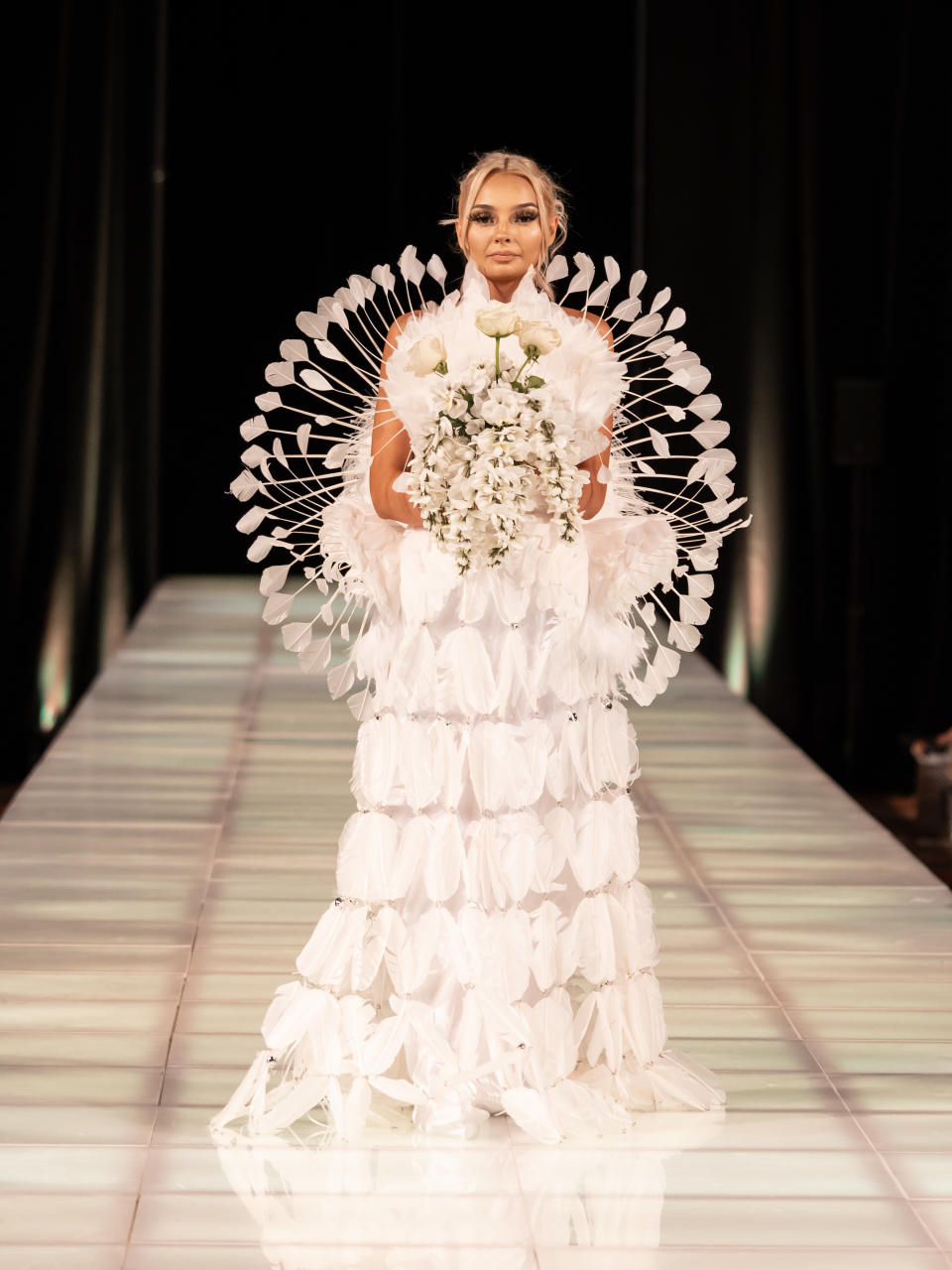
Already, Kahm is going places.
“Everything has been a whirlwind; I’m moving to New York to go to Parsons. They reached out to me and wanted me to apply for their MFA program,” said the recent graduate of the Institute of American Indian Arts, who is definitely one to watch.
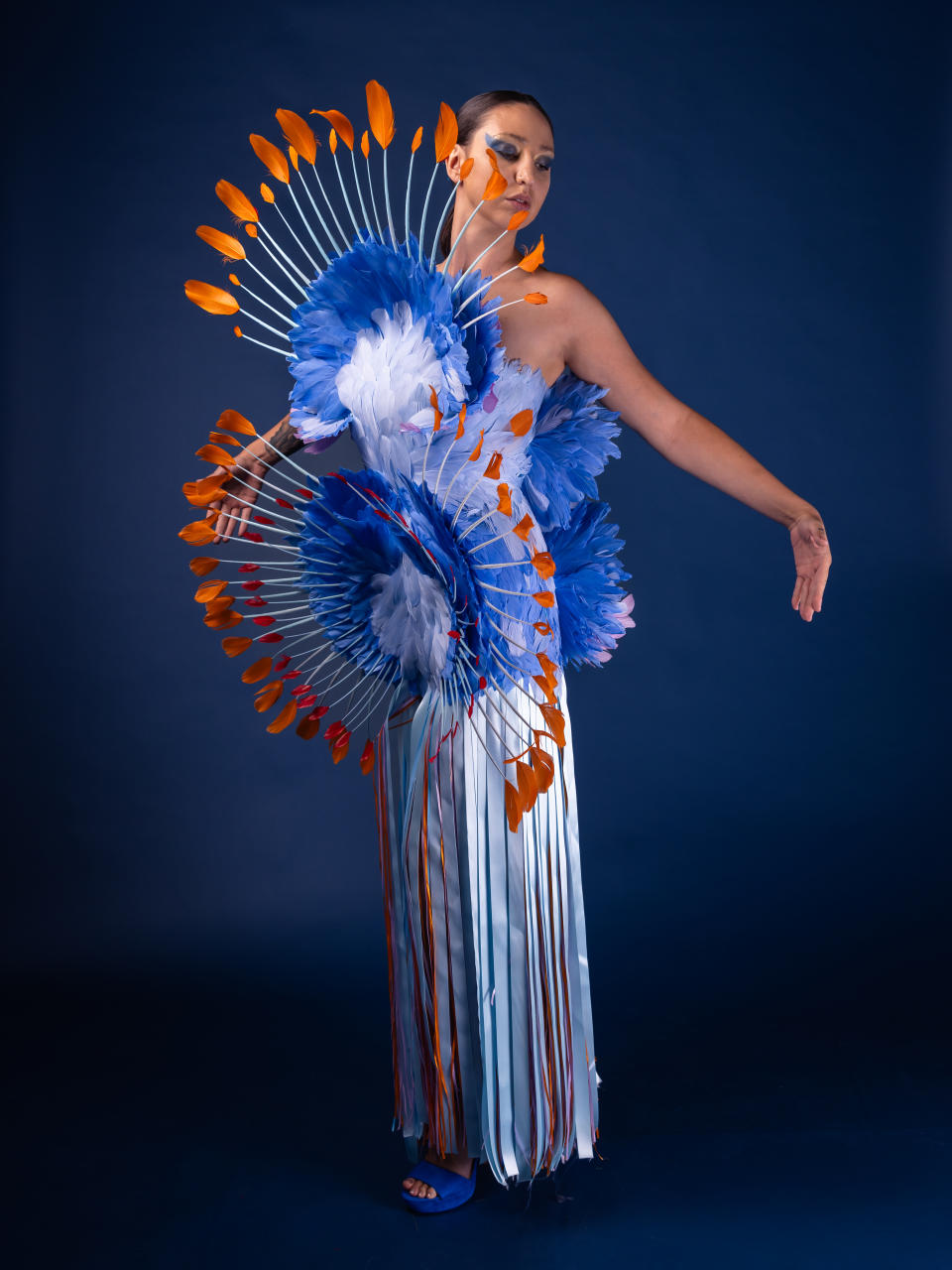
Jamie Okuma has already blazed a trail. The first Native designer to be inducted into the Council of Fashion Designers of America, the Luiseno, Shoshone-Bannock, Wailaki, and Okinawan artist/fashion designer showed an exceptional collection, with lots of commercial appeal.
With prints inspired by her backyard garden at home on the La Jolla Reservation, she also worked in some ’70s influences, perhaps inspired by her artist mom Sandra Okuma’s having worked in L.A. as a graphic designer for the music industry during that time.
“When we were shooting all these wildflowers, there was a bee, and it was perfect,” said Okuma of how the little guy made it into a black-and-white print on a billowing dress.
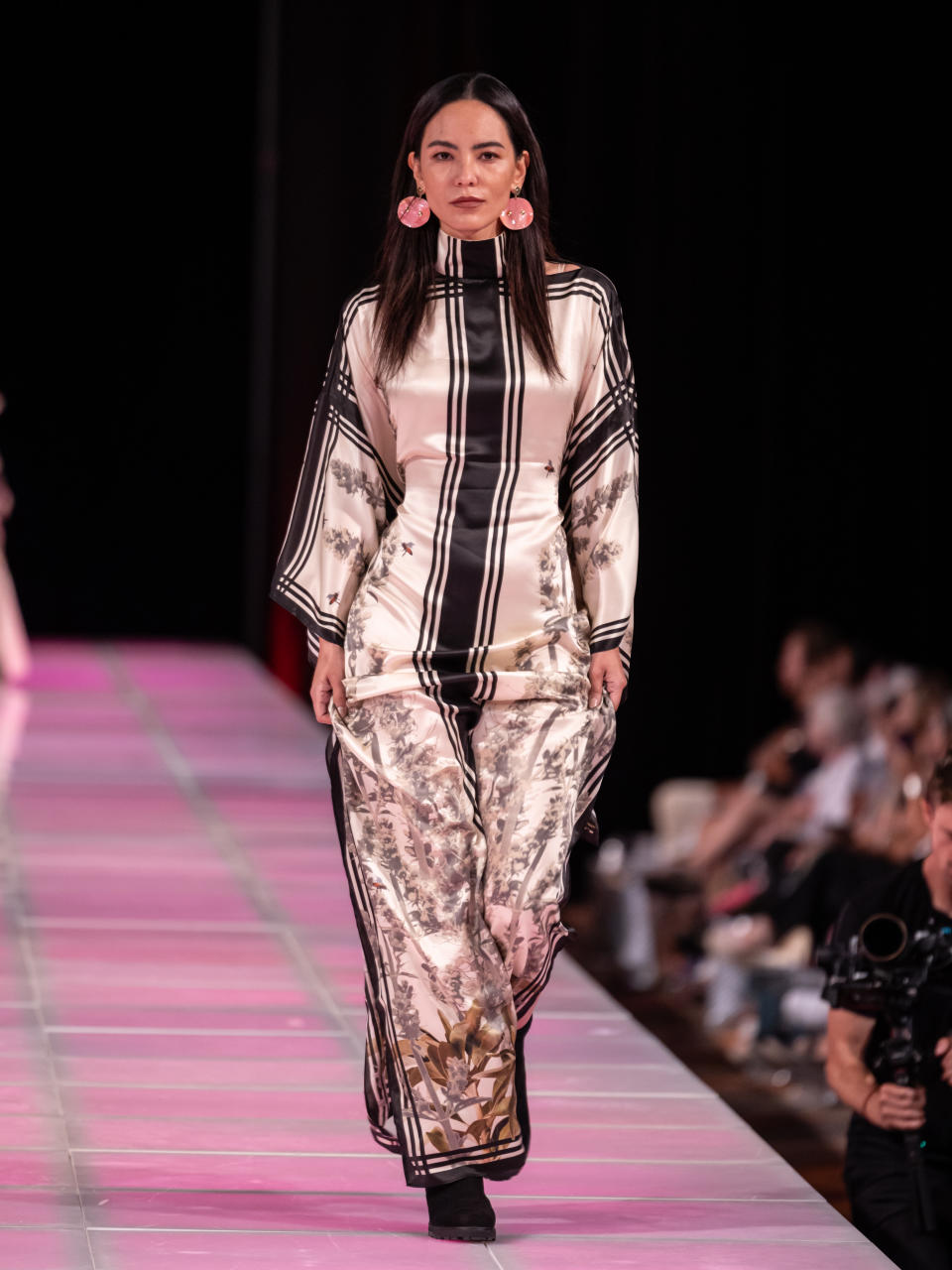
Okuma put an emphasis on tailoring, with almost psychedelic abstract pink and purple lupin prints on a great-looking long-line blazer and flared pants, and layered print-on-print again with a stretchy short sleeve minidress and matching tights.
“That’s a cultural thing, too, to have multiple layers of things,” she said of the more-is-more mentality, which also played out in her signature sophisticated black-and-white parfleche print separates, including tube dresses and mock turtleneck tops.
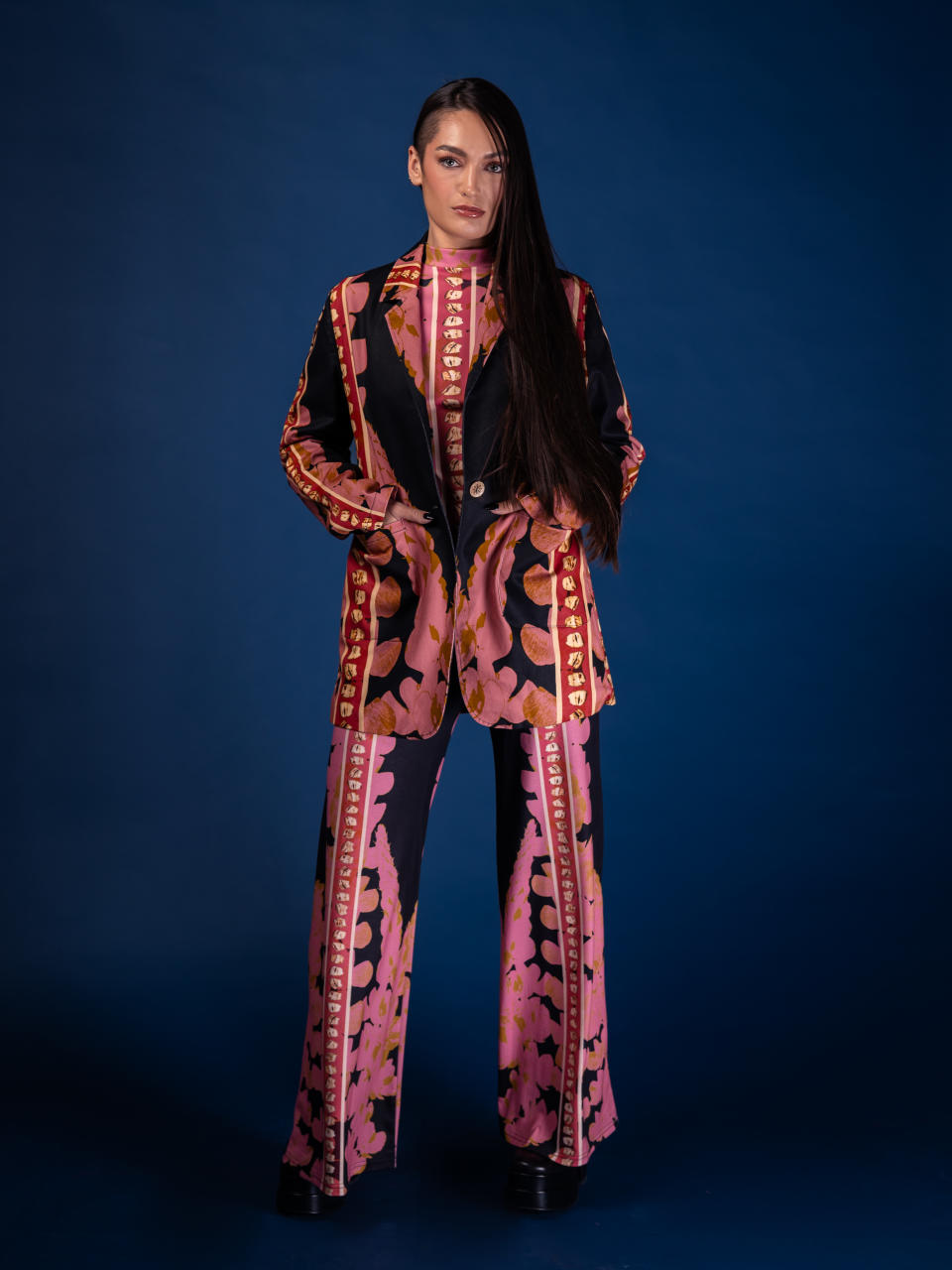
“I love walking for her,” said “Dark Winds” actor Jessica Matten, who was on the runway for the second year in a row for Okuma. “It makes me want to get more into that world,” she added, sharing that she would love to go to New York Fashion Week.
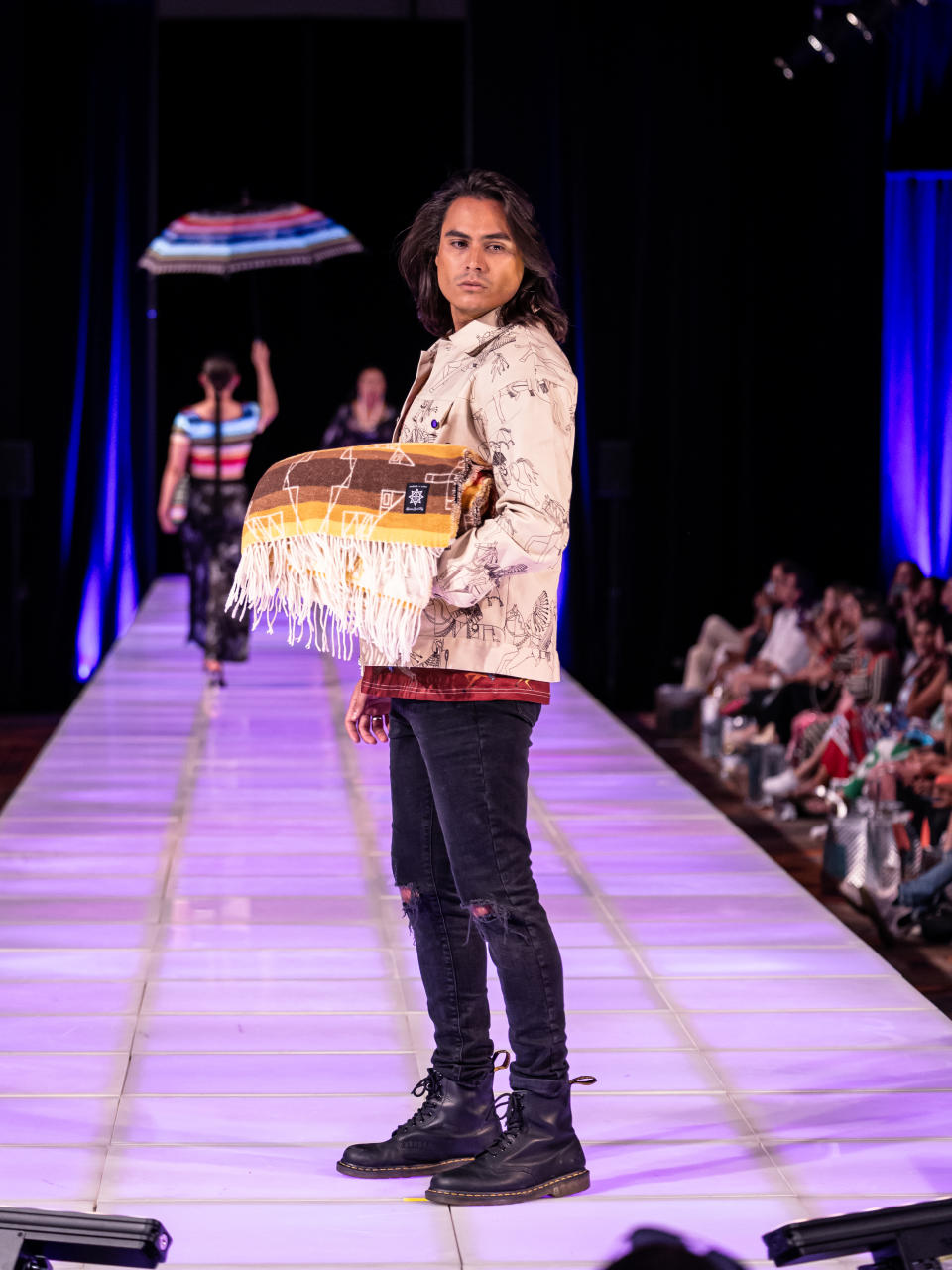
She wasn’t the only star of the AMC show in the mix at Santa Fe’s Indigenous fashion shows, which featured everything from audacious menswear and hand-pressed flower fabrics from Jason Baerg and Melanie Rose, to punk-inflected activist streetwear from Dusty LeGrande’s Mobilize brand.
Kiowa Gordon, who plays the FBI agent Chee on the series, walked for Lauren Good Day, the North Dakota-based Arikara, Hidatsa, Blackfeet and Cree designer, who turned her own ledger art of riders on horseback, as well as bead work, ribbon work and elk teeth motifs, into a fantastic looking and accessible wardrobe of stretch tops, long skirts and duster coats in an autumnal palette, as well as black-and-white shirt jackets, bombers and pants.
But Good Day’s children and niece nearly stole the show, dancing down the runway wearing traditional powwow regalia as an opener.
“This is why I do it, to continue our culture for future generations,” said Good Day, of wanting to show how traditional Native dress influences her contemporary vision, which has expanded to include a full collection for men and women, leather accessories, umbrellas, and soon blankets. Gordon and others held them in their hands like an offering; draped over their shoulders, or carried tucked inside a tote bag, referencing the significance of blanketing in Native culture.
“I thought it was fun to bring that in,” the designer said.
Navajo designer Orlando Dugi is also broadening his vision, moving from women’s to more gender-inclusive evening and ready-to-wear.
Working in Santa Fe, he makes everything in-house, by hand, including a dazzling half-jumpsuit, half-gown of pale rose tulle with a houndstooth waist spun from yucca fibers, and a pineapple leather chest guard worn with a silver pleated skirt.
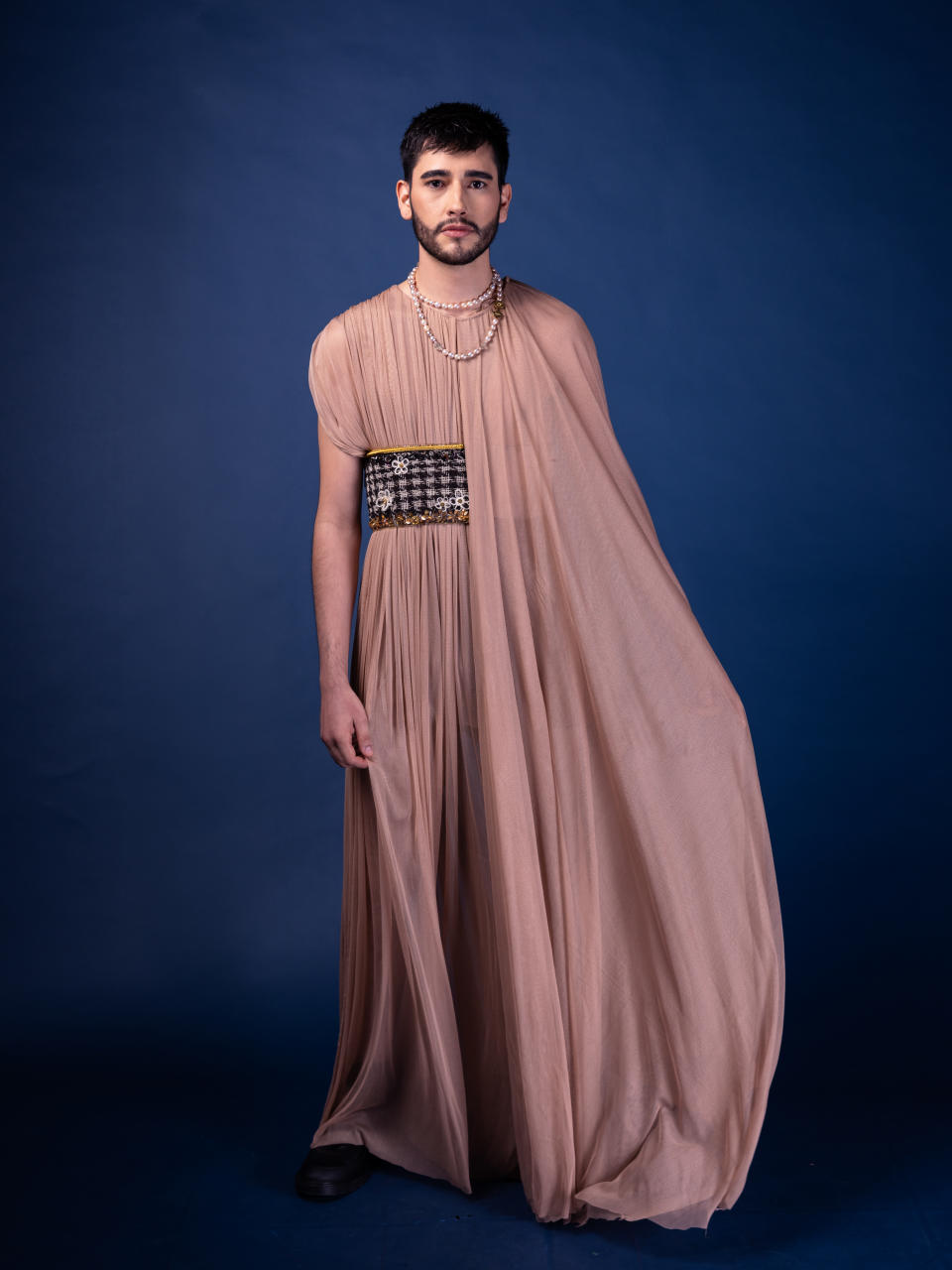
“This year, we wanted to do a little more lounge and day wear, I hope it was balanced,” Dugi said of including a sheer silver chain stitch shirt, arrowhead print bomber jacket and high waist shorts, crop top and fluid pants (modeled by “Reservation Dogs” music composer and solo artist Matu Wayuhi on the runway).
“One day, I put it on a female body, the next on a male, everyone likes it,” Dugi said.
Most of the collections shown, from Good Day’s contemporary-priced to Dugi’s luxury tier, sell direct-to-consumer, because Native designers have not been able to find the financial backing or retail support to go wider. But Himikalas Pamela Baker is an exception; the Vancouver Indigenous Fashion Week regular will start selling her ready-to-wear at Hudsons Bay Company in Canada in September.
The Musgamakw Dzawada’enuxw, Tlingit, Haida and Squamish designer, who studied at Otis College of Art and Design in L.A., presented everything from couture-like opera coats and sequin gowns with totem motifs to more everyday stretch tops, skirts and chiffon blouses in sophisticated prints with First Nations West Coast design elements.
“I’m starting with a small shop. I finally set up my manufacturers and I just got approached from Amazon,” said Baker, of the representative of Amazon Fashion who was scouting designers at Santa Fe Indian Market. “The thing is the ready-to-wear is ready to go. And everyone can wear it. People ask, ‘Can non-Indigenous people wear it?’ Yes, everyone can enjoy the culture.”
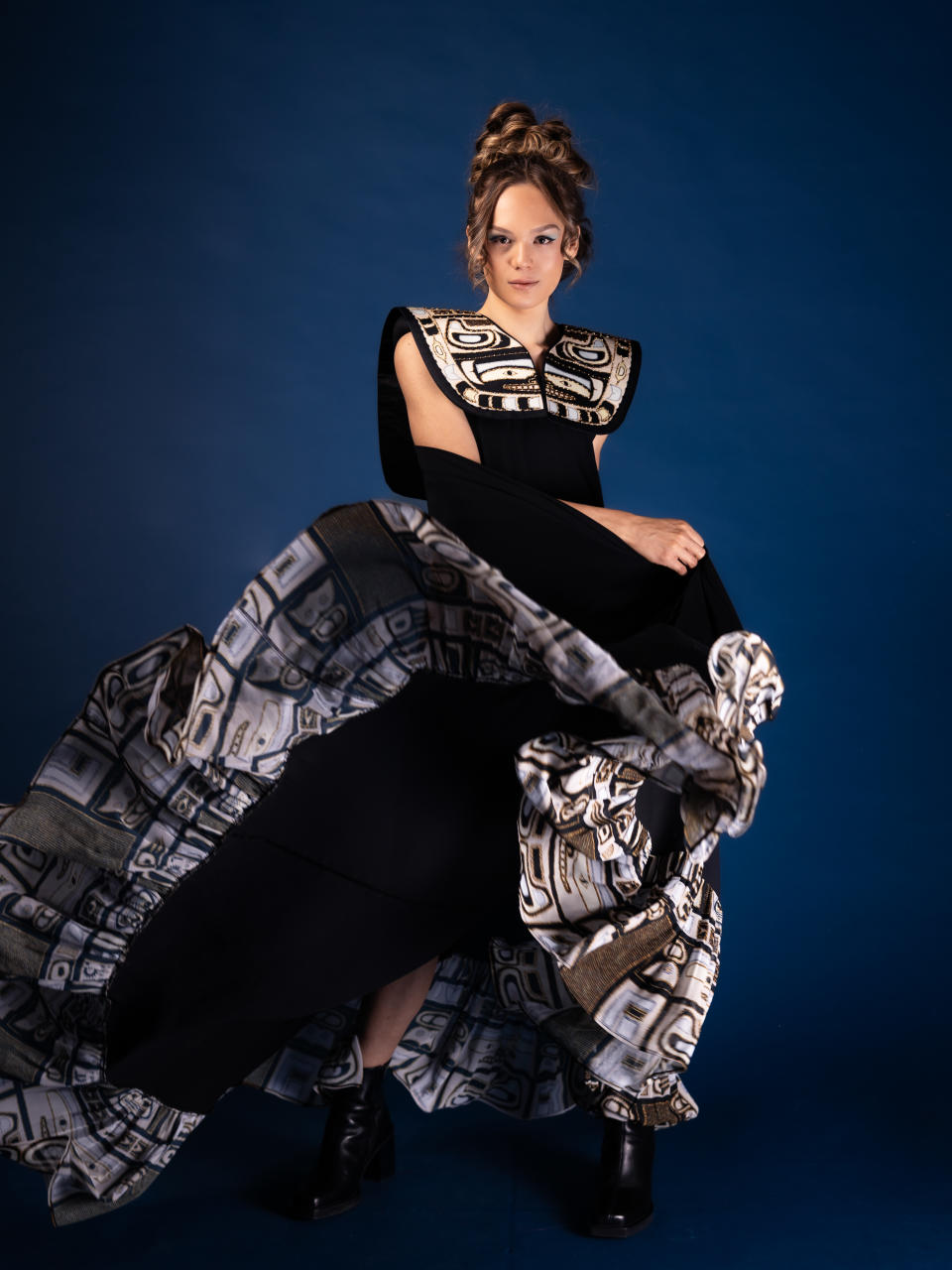
Best of WWD


